
Roots
Consider, for a moment, the whisper of ancient leaves, the earth’s damp embrace, and the stories carried in the very air of the Amazon. For those whose ancestry traces through these verdant lands, hair is a chronicle, a living testament to generations of wisdom. How did these communities, deeply attuned to their surroundings, understand the intricate dance of a textured strand? It was a perception rooted in a profound respect for the natural world, a kinship with every growing thing, including the very fibers of their being.
This exploration endeavors to honor that lineage, to hear the echoes from the source, and to discern the protective rituals that shaped their hair’s resilience. The textured hair, in all its coil and curl, was not simply a physical attribute; it was a canvas for identity, a conduit for spiritual connection, and a repository of communal memory.
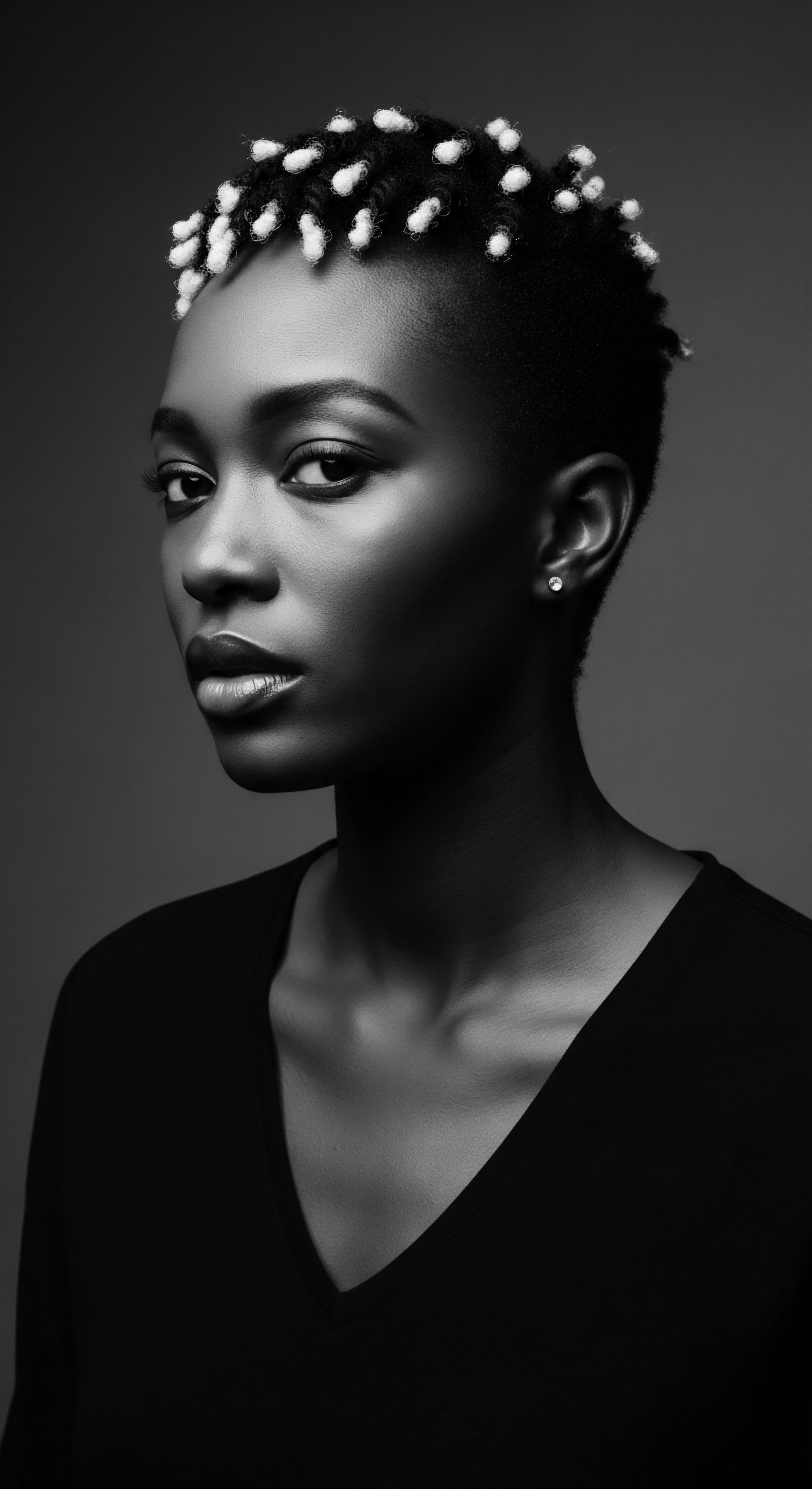
Hair as a Biological Record
The unique characteristics of textured hair – its varying curl patterns, its susceptibility to dryness, its strength, and its delicate balance – were, for ancient Amazonian peoples, observed realities. Their understanding did not hinge on microscopes or chemical analyses. It came from generations of keen observation, passed down through oral traditions and communal practice. They learned the rhythms of hair growth, recognized breakage patterns, and understood the thirst of a coily strand in the humid rainforest environment.
This practical knowledge formed a powerful, experiential biology, where remedies were found not in laboratories but in the very soil beneath their feet and the canopy above. The hair’s vitality was understood to mirror the body’s holistic wellbeing, connecting physical appearance to the bounty of their ecological home.

Cultural Classifications of Hair and Self
Hair, in these communities, transcended mere aesthetics. It served as a powerful marker of social status, age, marital state, and even mythological origins. The Kayapo, for instance, held deep symbolism in their hair practices.
Men of the Kayapo tribe, as chronicled by researchers, might wear a rope in their hair, a symbol reminiscent of the rope their mythical ancestors used to descend from the sky, a profound connection to their cosmic genesis. This practice speaks to a classification system that was not about curl type, but about the wearer’s relationship to their world, their people, and their stories.
Ancient Amazonian hair care was intrinsically linked to a holistic worldview, where hair was understood as an extension of one’s identity and connection to the natural and spiritual realms.
The specific hairstyles and adornments also communicated an individual’s journey. Women of the Kayapo, for instance, are often recognized by a distinct “V” formation shaved into their hair. Such patterns are not arbitrary; they carry meaning, shaping identity and social belonging within the community. This deep integration of hair into social fabric meant that caring for it was a communal, intergenerational act, solidifying bonds and transmitting cultural values.

A Lexicon Shaped by the Land
The language used to describe hair and its care among ancient Amazonian communities would have been rooted in their ethnobotanical knowledge and the natural world. Instead of terms like ‘porosity’ or ‘density,’ their lexicon would have spoken of the plants that nourished, the waters that cleansed, and the ancestral hands that tended. We can infer that terms would denote qualities tied to observed effects ❉ a plant that made hair “strong like a vine,” an oil that made it “gleam like the river’s surface,” or a practice that allowed it to “flow like a waterfall.” This vocabulary, though unwritten in our modern sense, was passed down through practice and story, a living dictionary of traditional knowledge.
The rich botanical diversity of the Amazon provided a natural pharmacy for hair care. Indigenous communities possessed extensive knowledge, utilizing an estimated 1,300 medicinal plant species for various ailments and well-being, a testament to their deep ethnobotanical understanding. This wealth of flora was directly applied to hair protection, not as a fleeting trend, but as a foundational element of sustained wellbeing.
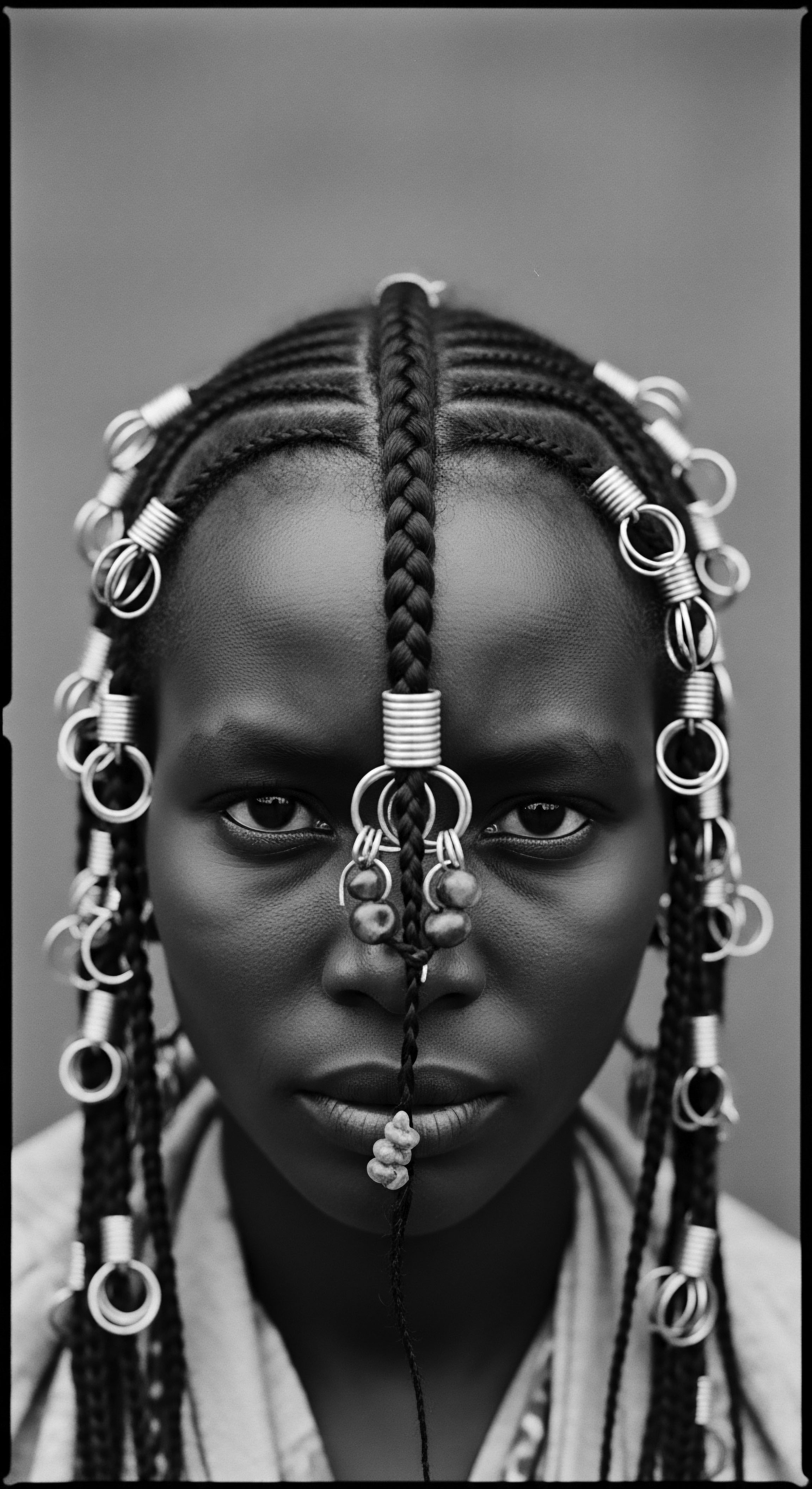
Ritual
Within the verdant embrace of the Amazon, the protection of textured hair was not a mere chore; it was a deeply ingrained practice, a series of rituals woven into the daily rhythm of life. These were not isolated acts but components of a broader philosophy of care, handed down through generations, each movement carrying the weight of ancestral wisdom. The techniques, tools, and transformations applied to hair reflected a harmonious relationship with the surrounding ecosystem, using what the earth provided to maintain strength and beauty.
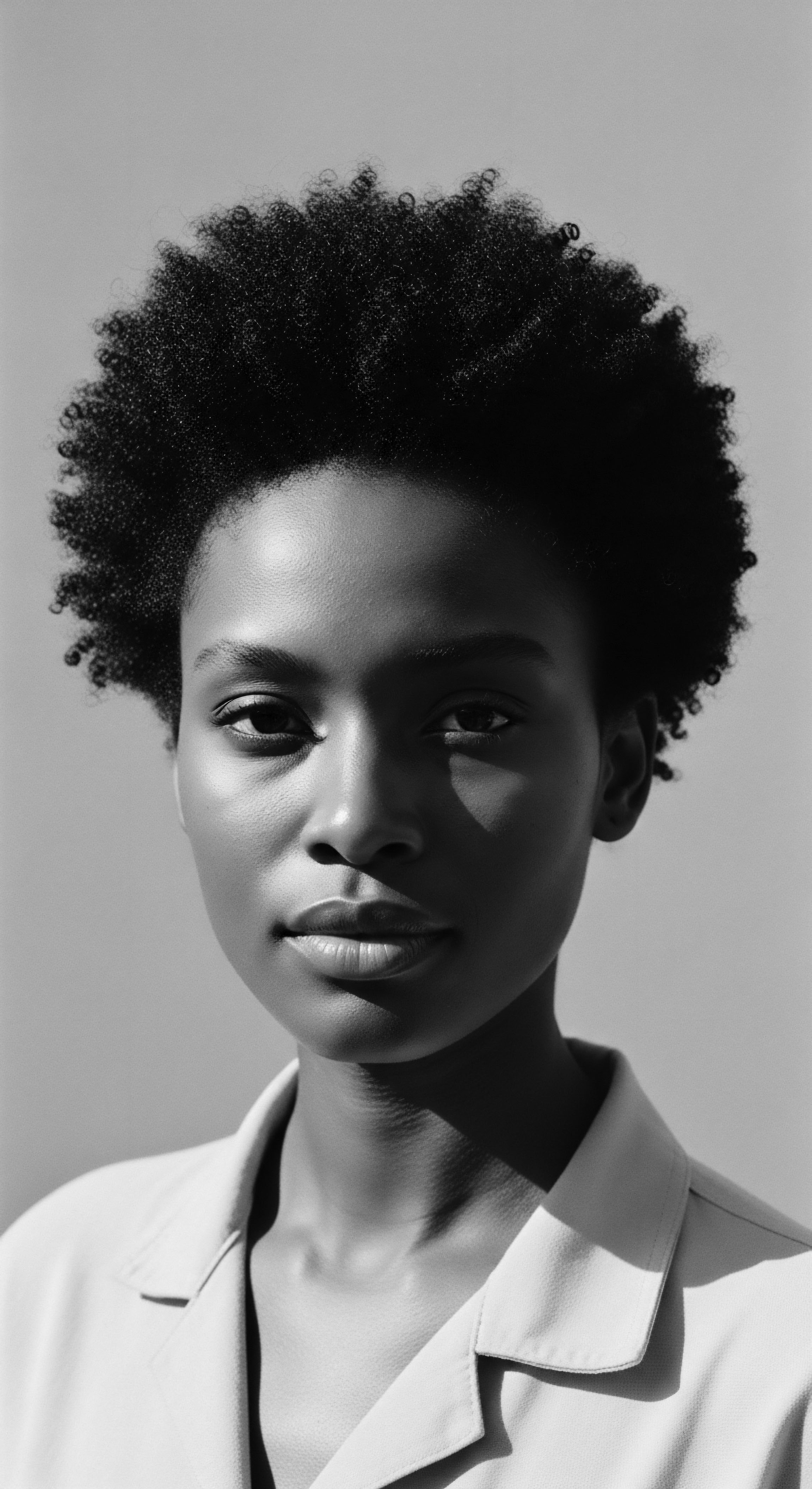
Traditional Methods of Safeguarding Strands
Ancient Amazonian communities employed a variety of methods that today we categorize as “protective styling,” though their intent went beyond mere aesthetics. These practices preserved the hair’s integrity from environmental aggressors ❉ the intense sun, the relentless humidity, and the physical demands of daily life in the rainforest.
- Plant-Based Oils ❉ Essential oils extracted from local flora served as powerful conditioning and moisturizing agents. The Ungurahui (or Rahua) oil, sourced from a rare nut, has a history of use by the Quechua-Shuar tribe to nourish the scalp and strengthen the hair’s cortex. Similarly, Pracaxi oil, with its high levels of behenic acid, contributed to softness and shine, while Andiroba oil promoted healthy curls. These botanical emollients formed the bedrock of their daily regimens, providing a natural barrier against environmental wear.
- Protective Adornments ❉ Hair was frequently adorned with elements from nature, serving both decorative and protective functions. The Yanomami, for example, decorated themselves with flowers and feathers. These adornments, while beautiful, could also help to contain hair, preventing tangles and minimizing exposure to elements. The Kayapo utilized feathers from native birds like the hyacinth macaw and crested oropendola, often in radiating headbands, representing the universe itself. Such elaborate featherwork, often found in pre-Columbian contexts, speaks to a rich tradition where adornment held both spiritual and practical significance.
- Braiding and Coiling ❉ While direct historical accounts detailing specific Amazonian braiding styles are less common than for some other Indigenous cultures, the practice of braiding or coiling hair is a widespread, protective tradition among many Native American groups. Such styles kept hair contained, minimizing friction, reducing breakage, and aiding in moisture retention – crucial benefits for textured hair in any climate. This hands-off approach allowed hair to remain undisturbed, promoting growth and vitality.
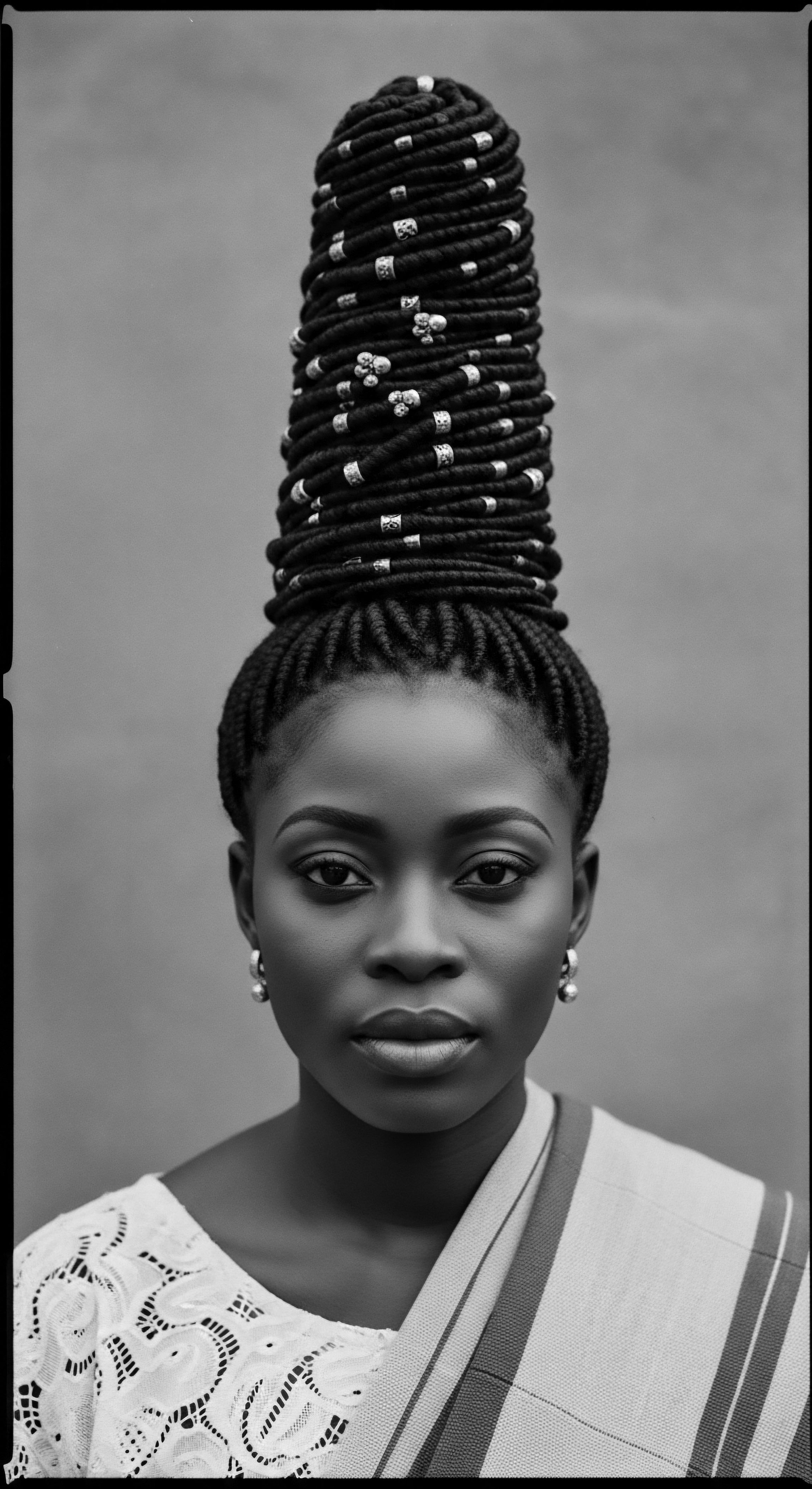
Botanical Tools and Cleansing Rituals
The Amazon offered a veritable pharmacopoeia of natural cleansing and treating agents. One notable example is the Yucca plant, a tropical root vegetable still used in traditional health, hygiene, and beauty practices in Latin American countries like Peru and Ecuador. Yucca contains saponins, natural compounds that produce a lather, making it an effective cleanser for the scalp and hair. This would have provided a gentle, yet thorough, cleansing without stripping the hair of its natural oils, a common problem with harsh modern detergents.
The knowledge of which plants to use and how to prepare them was passed down through generations, often specific to women within the community. This practical science, honed over centuries, allowed them to create effective, plant-based remedies for common hair concerns.
The application of native plant oils and strategic hair adornments provided essential moisture and physical safeguarding for textured hair against the Amazon’s climatic realities.
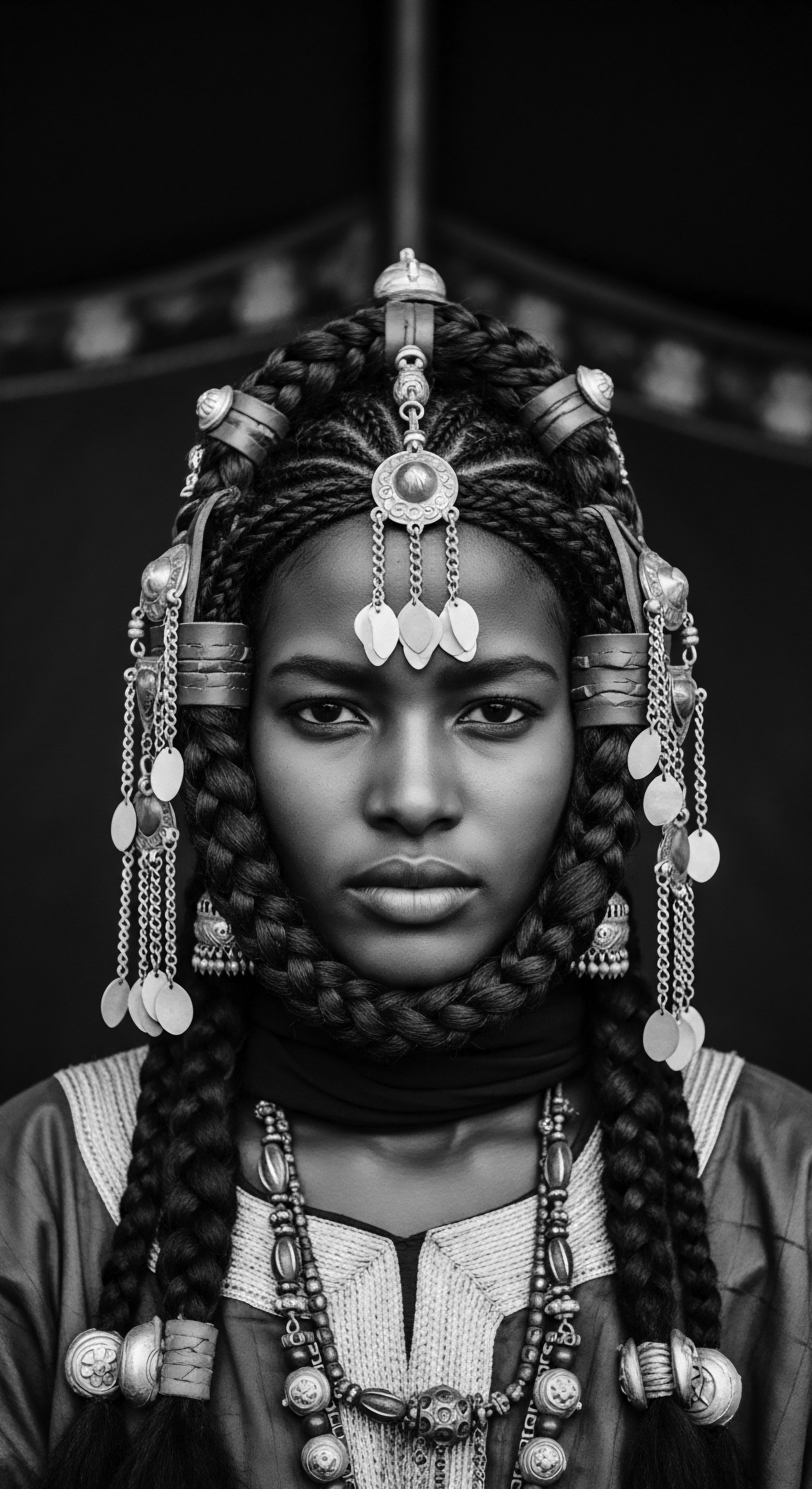
Did Ancient Amazonian Communities Utilize Heat Styling?
Unlike modern practices that often rely on external heat for styling, ancient Amazonian communities likely employed no such methods. Their approach was inherently aligned with natural methods, utilizing the elements as they were given. The ambient humidity of the rainforest itself would have played a role in maintaining moisture within textured strands, and their primary tools would have been combs crafted from natural materials, their own hands, and the various botanical concoctions.
The concept of altering hair texture through intense heat would have been foreign to a care philosophy centered on working harmoniously with hair’s inherent nature. This highlights a critical divergence from many contemporary styling habits, underscoring a deep cultural reverence for hair’s original form.
The absence of heat styling aligns with the ancestral wisdom that prioritized preservation over manipulation. Their methods fostered hair health from within, relying on plant-derived nourishment and protective practices that minimized stress on the hair fiber. This gentle approach reflects a profound understanding of textured hair’s unique structural needs, long before modern science provided the molecular explanations.
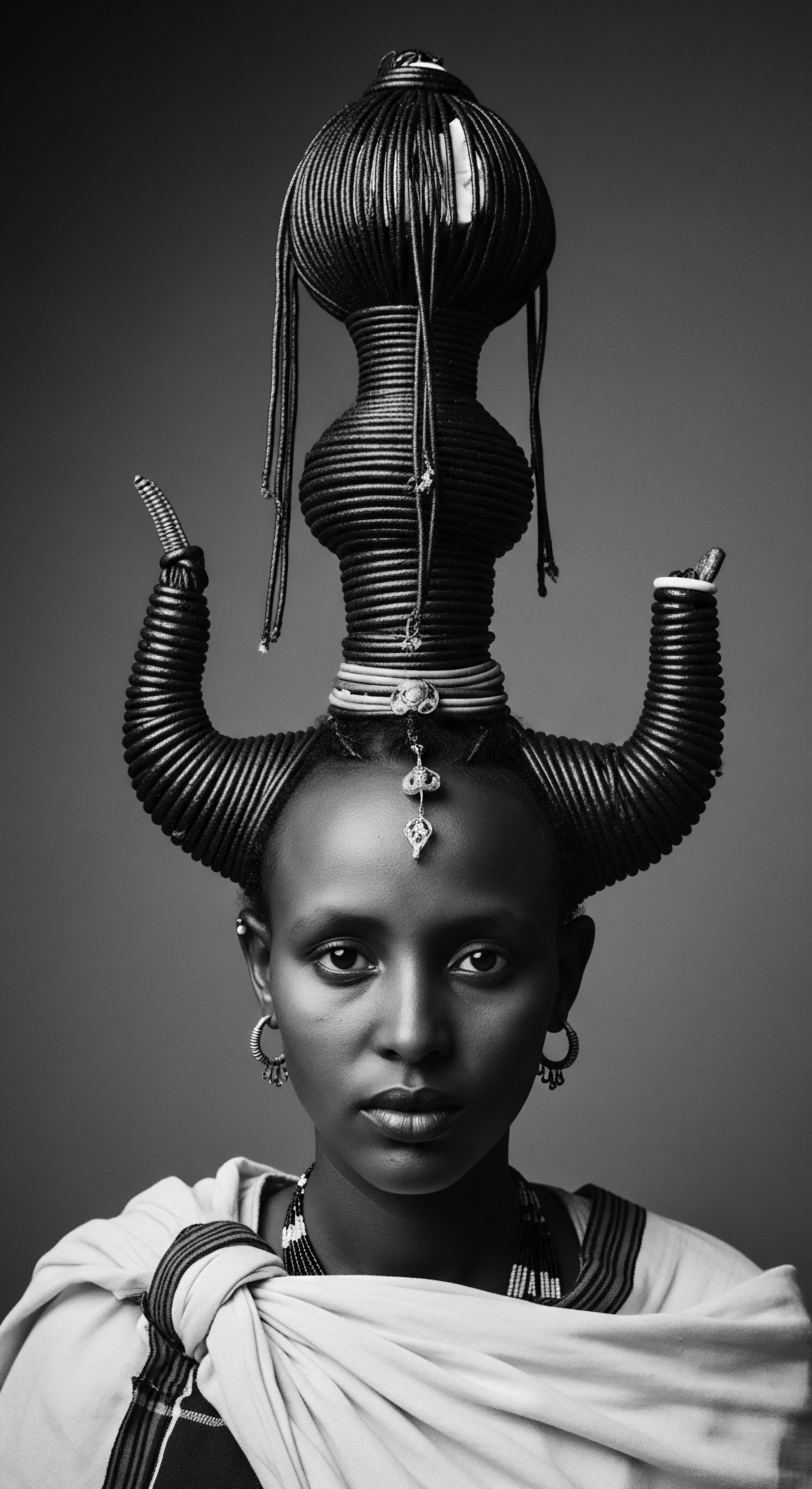
Relay
To grasp how ancient Amazonian communities protected textured hair, we must move beyond simple descriptions of practices and delve into the interwoven tapestry of their holistic approach. It was a regimen dictated by the forest, informed by spiritual beliefs, and reinforced by communal bonds. The wisdom of these ancestral methodologies offers profound lessons, often validated by contemporary scientific understanding, concerning the care of textured hair. This is not merely an historical account; it is a living archive of knowledge, still whispering through the leaves of the rainforest.

Holistic Care from the Heart of the Forest
The cornerstone of ancient Amazonian hair protection was a holistic philosophy, recognizing that hair health was inseparable from overall well-being and the vitality of their environment. This perspective stands in stark contrast to segmented modern approaches that isolate hair from the body or its ecological context. For these communities, nutrition derived from the forest, spiritual harmony, and communal practices all contributed to the resilience of their hair.
Consider the diet. A diverse intake of fruits, nuts, and plants provided essential vitamins, minerals, and healthy fats that nourished hair from within. The sacha inchi plant, cultivated in the Amazon for over 3,000 years, offers a rich source of omega-3, 6, and 9 fatty acids, known to encourage hair growth and prevent split ends. Such dietary components directly supported hair follicle health and the structural integrity of the hair shaft.
| Botanical Name (Traditional Use) Ungurahui Oil (Nourishes scalp, conditions) |
| Contemporary Understanding for Hair Rich in Omega 9 fatty acids, small molecular size allows deep penetration of hair cortex, restoring moisture and repairing the hair shaft. |
| Botanical Name (Traditional Use) Pracaxi Oil (Softens, adds shine) |
| Contemporary Understanding for Hair High levels of behenic acid, contributing to hair's pliability and luster. |
| Botanical Name (Traditional Use) Andiroba Oil (Promotes healthy curls, non-greasy) |
| Contemporary Understanding for Hair Contains alpha-hydroxy acids; traditionally used for skin irritations, also recognized for promoting curl definition without heavy residue. |
| Botanical Name (Traditional Use) Yucca Root (Natural cleanser, strengthens) |
| Contemporary Understanding for Hair Contains saponins for gentle cleansing; provides vitamins C, B, A; believed to thicken hair and offer UV protection. |
| Botanical Name (Traditional Use) The enduring legacy of Amazonian plants in hair care speaks to a timeless wisdom concerning natural remedies. |

Nighttime Rituals and the Essence of Protection
While specific historical records detailing “nighttime rituals” in the modern sense are scarce, the continuous protection of hair would have naturally extended into periods of rest. Without bonnets or silk scarves as we know them today, protection would have been achieved through other means. Hair might have been carefully coiled, braided, or secured with natural fibers to prevent tangling and breakage during sleep.
The persistent application of nourishing oils, such as those derived from the rubber tree seeds, valued for skin and hair care, would have provided overnight conditioning. This continuous, mindful treatment speaks to an understanding that hair needs consistent safeguarding.
The concept of hair as a living entity, a “soul of a strand,” would have encouraged constant gentle attention. The idea that hair connects an individual to their lineage and the spiritual world implies a reverence that naturally extends to its careful preservation, even during sleep.

Problem Solving Rooted in the Earth
When hair challenges arose—be it dryness, breakage, or scalp irritation—ancient Amazonian communities turned to their immediate environment for remedies. Their diagnostic methods involved deep observational skills and accumulated ancestral knowledge of plant properties.
- Scalp Wellness ❉ For scalp health, traditional healers might have employed plants like Mutamba, used in Peru and Brazil for hair loss, containing procyanidin B-2, a compound modern research has linked to hair growth. Nettle, also found in traditional Amazonian hair support formulas, is rich in vitamins K, B, and C, as well as amino acids, which are crucial for protein formation and healthy hair growth.
- Environmental Defense ❉ Living within the rainforest meant constant exposure to sun and humidity. Ingredients like Yucca provided not only cleansing but also some degree of UV protection, a natural shield against sun damage. This foresight in selecting ingredients that offered multi-faceted benefits underscores their sophisticated understanding of haircare.
- Community Health ❉ Hair health was also viewed through the lens of community. A Yanomami ritual, for instance, involved cutting an old woman’s hair, painting her body, and adorning her with flowers as a sacrifice during a flood, a deeply symbolic act connecting individual wellbeing to collective survival. While a dramatic example, it highlights hair’s profound role within their societal and spiritual frameworks.
The wisdom of these ancestral practices offers a compelling narrative for textured hair care today. It reveals a time when hair was not merely adorned but deeply respected, when its protection was a testament to a harmonious existence with nature, and when every strand carried the weight of a rich, unbroken heritage.
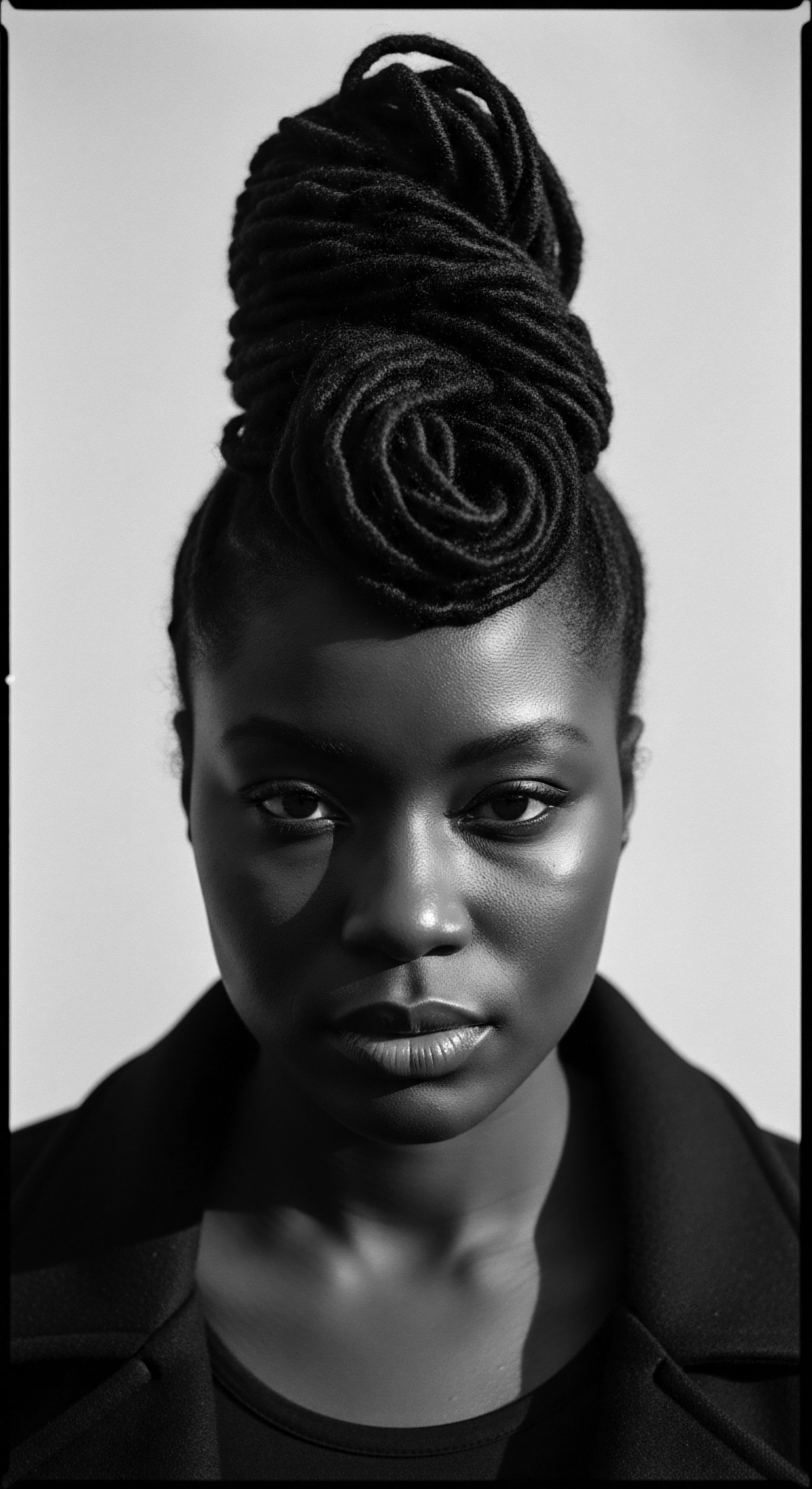
Reflection
The ancient Amazonian communities, in their exquisite connection to the land and its rhythms, offer more than just a historical account of hair care; they present a living philosophy, a resonant echo for our contemporary world. The delicate balance of nurturing and protecting textured hair, as practiced by these communities, reminds us that true care extends beyond product application. It is a holistic reverence for the strand, recognizing it as a direct extension of our heritage, a fiber woven with ancestral memory and the vitality of the earth.
Their wisdom compels us to reconsider our relationship with our own hair, especially textured hair, which has so often been misunderstood or marginalized in dominant beauty narratives. By understanding the ancient Amazonian approach – grounded in natural botanicals, intuitive observation, and profound respect for identity – we are invited to reclaim a deeper, more intentional connection to our own hair journeys. This legacy speaks to the enduring power of ancestral practices to inform and enrich our modern understanding, urging us to view each coil, kink, and wave not as a challenge, but as a magnificent, unbound helix, a testament to resilience, beauty, and the unbroken thread of our shared heritage. The soul of a strand, indeed, holds centuries of wisdom.

References
- Kamimura, A. et al. “Procyanidin B-2, extracted from apples, promotes hair growth ❉ A laboratory study.” British Journal of Dermatology, 2002; 146(1) ❉ 41–51.
- Takahashi, T. et al. “The first clinical trial of topical application of procyanidin B-2 to investigate its potential as a hair growing agent.” Phytotherapy Research, 2001; 15(4) ❉ 331–36.
- Muser, J. The Kayapo ❉ People from Heaven. Piekiełko, n.d.
- Corbett, Sarah. “Kayapo ❉ Ethnic Jewels Magazine.” Ethnic Jewels Magazine, n.d.
- Fabian Lliguin, Founder of Rahua. “The discovery of an ancient Amazon hair treatment launched this brand.” Cosmetics Design, 2019.
- Menire ❉ The Life of the Kayapó Woman and Her Home. Google Arts & Culture, n.d.
- Food and Agriculture Organization of the United Nations. Fruit trees and useful plants in Amazonian life. FAO, n.d.
